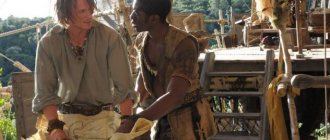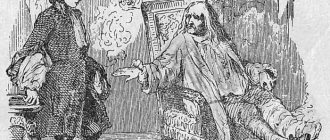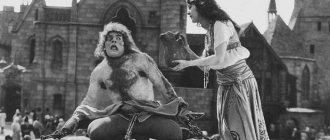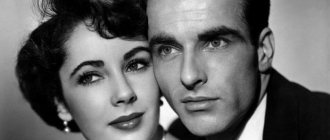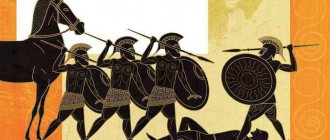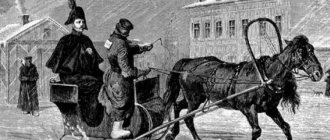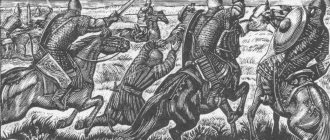The book about the adventures of Robinson Crusoe can rightfully be considered one of the most famous works in European literature. Even those of our compatriots who are not particularly inclined to spend time reading will certainly be able to tell that they once upon a time read about the amazing adventures of a sailor who lived alone for almost thirty years on a desert island. However, far fewer readers will remember who wrote Robinson Crusoe. In order not to return to the book again, but to immerse yourself again in the atmosphere of a carefree childhood, re-read this article and remember what the author wrote about, thanks to whom the amazing adventures of the sailor saw the light of day.
Robinson Crusoe and Munchausen
The events in the life of a sailor, described by Daniel Defoe, are one of the books of the 17th and 18th centuries, which took a special place among works of children's literature along with the adventures of Baron Munchausen. But if the story about the famous eccentric who claimed that he pulled himself out of the swamp by his hair is reread by adults only during a period of nostalgia for childhood, then the novel that Daniel Defoe created is a completely different matter. It should be noted that the name of the author who wrote about the amazing adventures of the baron is known only to specialist bibliographers.
About the creation of the work
The novel describes the author's contemporary era, the time of geographical discoveries, when sailors could be at sea for many years.
The adventure-adventure genre of the work is quite typical for realistic novels in England at that time.
The prototype of the main character is the sailor Selkirk and, of course, Daniel Defoe himself. The author endowed Robinson with his love of life and perseverance. However, Robinson is almost 30 years older than the writer: when the middle-aged sailor lands on his native shore, full of strength, the educated Defoe is already operating in London.
Unlike Selkirk, Robinson spends not four and a half years on a desert island, but 28 long years. The author consciously puts his hero in such conditions. After being on a desert island, Robinson remains a civilized person.
Daniel Defoe was able to write with amazing accuracy about the climate, flora and fauna of the island where Robinson ended up. The coordinates of this place coincide with the coordinates of the island of Tobago. This is explained by the fact that the author carefully studied the information described in books such as “The Discovery of Guiana”, “Travels Around the World” and others.
Robinson Crusoe
Novel and hero
Robinsons have existed since long ago when humanity appeared on earth. But in order for them to get their name, a boy had to be born in London in 1660 - Daniel Fo. And in 1719, having experienced many ups and downs, he had to sit down at his desk and write on a blank sheet of paper: “The Life and Extraordinary Amazing Adventures of Robinson Crusoe...”
Daniel De Foe (Defoe) himself was a very original person. A politician, a journalist, a failed businessman, and, in essence, an adventurer, always entangled in debt, at the age of sixty, by some miracle he preserved and passed on his overflowing vital energy to his literary brainchild.
So, having found himself on a desert island, Robinson Crusoe creates a real utopia, that is, a world in which money turns out to be “unnecessary rubbish.” Robinson conquers nature precisely because for an Englishman life outside civilization is impossible. “For whole hours—for whole days, one might say—I imagined in the most vivid colors what I would have done if I had failed to save anything from the ship. My only food would be fish and turtles. And since a lot of time passed before I found the turtles, I would simply die of hunger. And if I hadn’t died, I would have lived like a savage.”
Robinson is trying with all his might to tear himself out of so-called “simplicity” and “nature.” However, this story has an “undercurrent” - it was discovered by Jean-Jacques Rousseau - the hero is terrified of breaking away from civilization, becoming a savage, but at the same time, he is getting closer and closer to nature.
Robinson, after all, grew up in a wealthy family and had no idea how to do simple work: sewing clothes, carpentry, firing pots, sowing and baking bread, milking goats, churning butter and making cheese. Therefore, he is constantly forced to “reinvent the wheel.” A rather careless young man turns into a true creator. Moreover, he not only creates a material world around himself, but also acquires his own inner world. In the original novel, Robinson goes from unbelief to faith, and in the Russian retelling by Korney Chukovsky he becomes a wise man, although not nearly as religious as in Defoe’s text. One way or another, what falls into the hands of both adults and young readers is not just “reading material”, but “a most successful treatise on natural education”
(Jean-Jacques Rousseau). Speaking in modern language, this is a book about self-education, about how a person “makes himself.”
And, as Dmitry Urnov, a researcher of Daniel Defoe’s work, noted, we are dealing with an “anti-adventure.” In the book there is no love affair, no chases, no battles, no search for treasure, there are even practically no dialogues (except for conversations with the parrot and Friday). What kind of magic must a writer have in order to force the reader to continuously follow how the hero, “expelled from Paradise,” independently learns various crafts and agriculture, drives stakes into the ground for a whole year to protect himself from enemies, and then makes a boat for two years. He deals with the most ordinary things, which, reading another book, we would not pay any attention to. Literary scholars have long called this the “phenomenon of simplicity.” Indeed, the secret of the charm of the novel and its protagonist is difficult to explain.
Maybe the fact is that each of us in childhood, sometimes without even knowing it, played Robinson. It doesn’t matter what his name was: Robinson, Chingachgook, Leather Stocking, Steady Hand, or even more intricate. The main thing is that there is a hut somewhere in a secluded corner of the garden and a feeling of loneliness. That is, there would be a place where you can hide from adults, listen to the chirping of grasshoppers and the rustle of rain, look at the clouds running across the sky - in a word, be alone with nature and your own thoughts, not even understanding, but feeling that this is real happiness. Maybe this is where we need to look for the “roots” of our Robinson?
By the way, not only boys were and are interested in Robinson. Tatyana Lugovskaya in her book “I Remember” writes about her doll named Robinson Crusoe. I wonder if the toy had a tiny furry umbrella?
Hero and author
How similar is Robinson Crusoe to Daniel Defoe? Some researchers are trying to draw parallels between events in the life of the hero and the author. Robinson, for example, runs away from his home, and Defoe refuses to take the priesthood. A shipwreck means bankruptcy, a desert island symbolizes England, and so on and so forth. Defoe himself suggested this idea to literary scholars, if, of course, you believe his confession. “There is not a single circumstance in imaginary history that would not be an allusion to a real event and would not respond, step by step, in the inimitable Robinson Crusoe.”
But, most likely, what we are looking at is not an allegorical, but a spiritual biography of Defoe, and a desert island - the very loneliness in which the writer found himself at the end of his life, because he took up his famous book at almost sixty years old.
The first version of Robinson Crusoe was found not so long ago - in the Royal Library of London. In the rough drafts of the novel, Robinson spent eleven years alone - he sowed barley and corn, raised goats, and once made a small canoe and set off on a journey. It turned out that all these years he lived on a peninsula connected by an isthmus to the coast of Guyana.
It is curious that after the publication of the novel, Daniel Defoe was seriously accused of plagiarism, that is, of using the brochure “The Vicissitudes of Fate, or The Amazing Adventures of Alexander Selkirk, Written by His Own Hand.” The problem was that this brochure was, in turn, reprinted (with the exception of a few lines) from the book of a certain Captain Rogers. That's who should have sued!
Robinson Crusoe prototypes
Undoubtedly, Robinson had predecessors both in literature and in life. We can confidently call Henry Neuville's novel "The Isle of Pines, or the Fourth Island near the unknown Australian continent, lately discovered by Heinrich Cornelius von Slotten" (1668). We can also talk about the story of the boatswain (or navigator) Alexander Selkirk. This quarrelsome sailor quarreled with the captain and, at his own request, was disembarked from the ship on an island located off the coast of Chile. Selkirk hoped that he would soon be picked up by some ship that would come here to replenish water supplies. However, he miscalculated. He had to live on a desert island for four years and four months. There was no Friday and no meeting with cannibals there. In addition, it was not the pirate ship that saved the unfortunate man, but the English ship "Duchess".
Returning to his homeland, Selkirk attracted general attention. Captain Rogers wrote about him, who himself removed the unfortunate from the island in the Juan Fernandez archipelago. Then this story was told by another captain, Cook, and, some time later, by the essayist Richard Steele in the Englishman magazine.
Did Selkirk read Robinson Crusoe? Hardly.
The book cost five shillings, which was half the price of a thoroughbred horse. In addition, the legendary boatswain, who ended his naval career as a captain, died two years after the publication of the famous novel. They say that he was at sea almost all this time.
Alexander Selkirk’s meeting with Daniel Defoe in a port tavern, as well as Selkirk’s words about the author of Robinson Crusoe: “Let him take advantage of the poor sailor” are just idle fiction. At least, that's what Dmitry Urnov thinks. Although the question is: “Did Defoe meet Selkirk?” — still remains open.
Robinson Island
In essence, there are two heroes in Daniel Defoe's book. No, no, the second one is not Friday at all, but the island on which Robinson Crusoe spent twenty-eight years of his life.
Many literary scholars believe that Robinson Island could only exist in the rich imagination of the author, and it is pointless to look for this piece of land on maps. This is partly true, but...
Bosun Selkirk, who had quarreled with the captain, was decommissioned from the ship off the coast of Chile on the uninhabited island of Mas a Tierra (which means “closer to the shore” in Spanish). The island belongs to the Juan Fernandez archipelago, discovered in 1563 and named after the Spanish navigator. The island's area is 144 square kilometers, the highest point is Mount Yunke (1000 meters above sea level). The average temperature of the coldest month is + 12 ° Celsius, the warmest is + 19 °. The land there is fertile, edible root crops, cereals, and fruits grow, and the offspring of those goats that Juan Fernandez left on the island live. But Daniel Defoe could not know all this, including the description of flora and fauna.
In those days when “undiscovered places” were listed here and there on world maps, it was not possible to find a detailed description of the island of Mas a Tierra. There was nothing to even think about the actual journey: even if some adventurer-captain had been found, the aging writer would have needed crazy money and remarkable health. In addition, Defoe suffered from seasickness since childhood.
What to do? Relocate Robinson. Send to a more or less familiar island. Where? Into the Atlantic Ocean, at the mouth of the Orinoco River, to land whose geographical coordinates coincide with the island of Tobago. Of course, the writer himself was not there. But sometimes suitable books come in very handy. For example, “The Discovery of Guiana” by Raleigh, “Travels Around the World” and “Diary” by Dampier.
However, now the islands of Mas a Tierra and Tobago are challenging the honor of being considered Robinson's refuge. In 1935, the island of Mas a Tierra was declared a National Park. And in the 1960-70s, the Chilean government renamed it Robinson Crusoe Island. The nearby island of Mas a Fuera ("further offshore") is named after Alexander Selkirk.
But Tobago is not giving up either. In any case, tourists in Tobago must be shown the Robinson Crusoe hotel and cave.
Robinsons of Robinson Island
The island of Mas a Tierra was frankly lucky with the Robinsons.
The first of them that we know about was the same navigator Juan Fernandez, who lived here for several years. It was he who planted edible root crops, cereals and fruits, and raised goats, which later went wild. By the way, their offspring are hunted today by local residents.
But a holy place is never empty. At the beginning of the 17th century, Dutch sailors found themselves on the island. Following them, another Robinson lived on Mas a Tierra for three years - a black sailor who escaped from a merchant ship that sank nearby.
The next was an Indian from Central America, disembarked from the ship by English pirates. Then it was the turn of nine sailors, who were thrown here by the captain in 1687 for gambling with dice. These Robinsons were not upset at all; for lack of money, they divided the island into parts and lost them to each other.
Fourteen years later, Mas a Tierra was inhabited again. Alexander Selkirk, already known to us, appeared on it. But he did not close the “track record” of the island. In 1719 there were deserters from an English frigate here, and in 1720 - the crew of a sunken English ship.
Now five hundred people permanently live on Robinson Crusoe Island. As you might expect, many of them are named after Daniel, Robinson and Friday.
In winter, bad weather isolates the island from the world: ships and planes cannot come here. And at other times of the year, tourists don’t come here in crowds: getting to the island is too difficult and expensive.
Robinson Crusoe himself
Yes, Robinson Crusoe was a “jack of all trades.” Among other things, he had to skillfully wield such an instrument as a pen (and this after twenty-eight years of living on an island where you could only talk to a parrot and a savage). After all, if you open the full text of the novel and read its title, you will be convinced that this immortal book allegedly belongs to Robinson: “The Life, Extraordinary and Amazing Adventures of Robinson Crusoe, a sailor from York, who lived twenty-eight years all alone on a desert island , off the coast of America, near the mouth of the great Orinoco River, where he was thrown by a shipwreck, during which the entire crew of the ship perished, with an account of his unexpected liberation by pirates. Written by himself."
Thanks to the book, we know exactly on which shoulder Robinson carried the gun, what his clothes made of goat skins, shoes, the notorious hat and umbrella looked like. So the portrait painters who inevitably appeared were faced with a task that was both simple and complex.
The canonical images of Robinson Crusoe can now be called the drawings of Jean Granville (1803-1847). He managed to show us not a “stuffed animal” dressed in skins, but a person going through trials, but full of dignity. Jean Granville illustrated all key episodes of the novel. Readers were so accustomed to his drawings that it was very difficult for them to imagine any other Robinson.
However, Russian artist Nikolai Popov found an original way out. His illustrations - drawings on the margins of the diary - seem to have been made by Robinson himself. And the diary entries are full of errors: as if our hero was not good at spelling!
But these are rather games for adults. And children, as you know, love elegant pictures with drawn details.
This is exactly what the artist Igor Ilyinsky took into account.
I wonder what portraits of the famous Robinson Crusoe we will see next?
The Further Adventures of Robinson Crusoe
How many readers know that the novel about the life of Robinson Crusoe on a desert island had two more unsuccessful sequels?
As usual, the readers themselves were to blame for their creation: they did not want to part with Robinson and demanded more and more new stories from Defoe.
The first continuation is “The Further Adventures of Robinson Crusoe...”.
Here Defoe “ became hasty”
, forced Crusoe to wander, even visit Russia, sent him on a voyage around the world, and
“the novel thus joined the ranks of many books about travel, which were crowded even without Robinson”
(D. Urnov).
Continuation two - “Serious reflections during the life and amazing adventures of Robinson Crusoe, including his visions of the angelic world”
— essays on philosophical, social and religious topics. Few people can handle such a book.
The novel about Robinson Crusoe was first published in Russian in 1762-1764. It was published in St. Petersburg by the Academy of Sciences. It was translated from French (yes, that’s right) by the famous translator Yakov Trusov. And only in 1842 the book was translated from the original by A. Korsakov.
Nowadays, most Russian readers, without even suspecting it, read not a translation of the famous novel, but its free retelling. Chukovsky’s retelling differs from the full text, of course, in the number of pages: about half of them remain there. And Robinson himself has changed a lot. He diligently grows grain, raises goats, makes a boat, tirelessly strengthens his possessions, but he has no time left for reflection. The Bible and Divine Providence had nothing to do with it.
However, a brief summary of Robinson appeared in English already in 1722. Copyright did not exist then. At first, the hero was forced to change his religion: from a Protestant he turned into a Catholic. And then they went even further - they made the book thinner, that is, cheaper, so it sold out better. Simple short phrases are accessible to illiterate readers, of whom there are much more than educated people. Publishers quickly realized all this and began churning out “leftist Robinsons.” Of course, Defoe did not receive any fees and could not do anything about it. He was only trying to use his favorite weapon - a quill pen. In the preface to the second edition of the novel, Defoe wrote that he considered himself entitled to ask the publishers what the difference was between them and highwaymen. But, alas, words have no effect on crooks, and talent and money rarely go hand in hand.
What does "Robinsonize" mean?
The word “Robinson” was coined by Jean-Jacques Rousseau and, by the way, he loved to repeat it. There is no doubt what exactly the author of “Emile” had in mind, where Defoe’s novel is called a book for raising teenagers. This is life "in the spirit of simplicity"
, closeness to nature, its beneficial effect on the individual. In a word, the concept of “Robinson” here clearly had a positive connotation.
And in Russia this clumsy word was at one time perceived with a negative sign. In Lermontov's "Hero of Our Time" we meet a lover of "Robinson": a social dandy, a player, but with a man's
and
“with a cane, like Robinson Crusoe
. “Robinsoning”—“saying goodbye” externally or internally—was a fashionable style of behavior among the Russian nobility.
The first to rehabilitate Defoe's novel was, perhaps, Leo Tolstoy. Some literary scholars believe that Tolstoyism itself was largely read from Robinson Crusoe. Lev Nikolaevich reread this book more than once. On Tolstoy's instructions, one of his school teachers made an abbreviated summary of the novel. And Lev Nikolaevich himself and his favorite heroes were constantly Robinson: they plowed, mowed and generally loved to “do simple work”
.
Nadezhda Voronova
The novel saw the light
When you read this work, you understand that whoever wrote Robinson Crusoe took great pleasure in working on his brainchild. The work done by Daniel Defoe was appreciated by his contemporaries. The book was published on April 25, 1719. Readers liked the novel so much that in the same year the work was republished 4 times, and in total during the author’s lifetime - 17 times.
The writer's skill was appreciated: readers believed in the incredible adventures of the main character, who spent almost 30 years on a desert island after a shipwreck.
Twice a lie - or effective PR
Daniel Defoe seems, at first glance, to be the author of one great book - Robinson Crusoe. Taking a closer look, we will understand that this is not entirely true: in about five years (1719–1724), he published about a dozen fiction books one after another, important in their own way: for example, “Roxana” (1724) became for many years a model of criminal novel, and “Diary of the Plague Year” (1722) influenced the work of García Márquez. And yet “Robinson Crusoe”, like “The Odyssey”, “The Divine Comedy”, “Don Quixote”, is a completely different level of fame and the basis for long cultural reflection. Robinson became a myth, a titan, an eternal image in art.
On April 25, 1719, a book with a verbose title appeared in London bookstores - “The Life, Extraordinary and Amazing Adventures of Robinson Crusoe, a sailor from York, who lived for 28 years all alone on an uninhabited island off the coast of America near the mouth of the Orinoco River, where he was thrown by shipwreck , during which the entire crew of the ship, except himself, perished, with an account of his unexpected release by the pirates; written by himself." The original English title has 65 words. This title is also a sensible annotation for the book: what reader wouldn’t buy it if on the cover there is America and pirates, adventures and a shipwreck, a river with a mysterious name and an uninhabited island. And also a small lie: in the twenty-fourth year, “complete loneliness” ended, Friday appeared.
The second lie is more serious: Robinson Crusoe did not write the book himself, he is a figment of the imagination of the author, who deliberately did not mention himself on the cover of the book. For the sake of good sales, he passed off fiction (artistic fiction) as non-fiction (that is, documentary), stylizing the novel as a memoir. The calculation worked, the circulation was sold out instantly, although the book cost five shillings - the same as a gentleman's formal suit.
Summary
Robinson Crusoe is the third son of a wealthy man. Since childhood, the boy dreams of sea voyages. One of his brothers died, the other went missing, so his father is against him going to sea.
In 1651 he goes to London. The ship he is sailing on is wrecked.
From London he decides to sail to Guinea, now the ship is captured by a Turkish corsair. Robinson falls into slavery. For two years he has no hope of escaping, but when surveillance weakens, Robinson finds an opportunity to escape. He, the Moor and Xuri are sent to fish. Throwing the Moor overboard, he persuades Xuri to flee together.
A Portuguese ship picks them up at sea and takes them to Brazil. Robinson sells Xuri to the ship's captain.
In Brazil, the main character settles down thoroughly, buys land, works, in a word, comes to the “golden mean” that his father dreamed of.
However, his thirst for adventure pushes him to travel to the shores of Guinea for labor. Neighboring planters promise to run the farm in his absence and hand over slaves to him along with everyone else. His ship is wrecked. He is the only one left alive.
Having difficulty reaching the shore, Robinson spends his first night in a tree. From the ship he takes tools, gunpowder, weapons, food. Robinson understands that the island is uninhabited. Subsequently, he visits the ship 12 times and finds a “heap of gold” there, philosophically noting its uselessness.
Robinson arranges for himself reliable housing. He hunts goats, and then domesticates them, establishes agriculture, and constructs a calendar (notches on a post). After 10 months of staying on the island, he has his own “dacha,” which the main character locates in a hut in that part of the island where hares, foxes, turtles live, and melons and grapes grow.
Robinson has a cherished dream - to build a boat and sail to the mainland, but what he has built can only allow him to travel near the island.
One day the main character discovers a footprint on the island: for two years he has been possessed by the horror of being eaten by savages.
Robinson hopes to save a savage who is destined “for slaughter” in order to find a comrade, assistant or servant.
Towards the end of his stay on the island, Friday appears in his life, whom he teaches three words: “yes”, “no”, “mister”. Together they free the Spaniard and Friday's father, captives of the savages. Soon after this, the crew of an English ship arrives on the island, taking their captain, his assistant and the ship's passenger prisoner. Robinson frees the prisoners. The captain takes him to England.
In June 1686, Robinson returns from his journey. His parents died long ago. All income from the Brazilian plantation is returned to him. He takes care of two nephews, marries (at 61), and has two sons and a daughter.
"Robinson Crusoe" in brief
"Robinson Crusoe" by Defoe briefly
Robinson Crusoe was born into a middle-class family and his father always told him that this was better than being rich or poor. But the son did not want to work and did not particularly like money - he wanted to travel. And so, when Robinson became an adult, he set off on a journey on his friend’s ship. The first time he was caught in a storm, he vowed not to sail on ships again, but after the storm he forgot about his oath. After some time, off the African coast, the ship was attacked by pirates and the entire crew was captured. Robinson was luckier than others - he was not sold into slavery in the depths of Africa, but was left to serve the chief of the pirates. For several years he served, cleaned, cooked, and could not even hope for salvation. But soon the owner ordered Robinson and the Moorish servant to go fishing in a small boat. By tricks and deceit, Robinson brought guns, food, water, and wine onto the boat. When the boat went out to sea, Robinson threw the Moor overboard and ordered him to swim to the shore, otherwise he would shoot him. A little guy remained on the ship, who was also a servant. No danger should have been expected from him, and Robinson took him with him. Together they sailed on a boat along the African coast in the hope of finding civilization. A few weeks later, their boat was spotted by a Portuguese ship and the captain took the former slaves on board.
On a Portuguese ship, Robinson Crusoe reached the coast of Brazil. Here, in order not to starve, he got a job on a sugar cane plantation. Robinson soon realized that the plantation was a good business, and after a few months he already had his own plantation, which brought in good money. The captain of the Portuguese ship, who became Robinson's friend, brought him all sorts of trinkets from England that could be sold at a high price in Brazil. So Robinson Crusoe lived as a rather wealthy plantation owner and did not need anything. But one meeting changed everything. All the local plantation owners met and had conversations about business. The conversation turned to African slaves - as if you could sail to the coast of Africa and, for pennies, hire a couple of natives who would work on the plantation seven days a week. Robinson was offered to sail on such an expedition for slaves and he agreed, also hoping for several slaves for the plantation. He wrote a will for his property, which, in the event of death, almost everything was to remain to the Portuguese captain, and went on a journey. But the journey did not last long - the ship was caught in a severe storm and was about to be torn apart. The team, saving themselves, got into the boat and began to row to the shore, but the wave overturned the boat and everyone drowned. Everyone except Robinson Crusoe. He was thrown onto an unknown shore, along which he ran in horror for some time. Having calmed down, Robinson climbed a tree and fell soundly asleep.
Waking up the next morning, the castaway saw their ship, which was not torn apart by a storm and was driven to the very shore. Robinson swam to the ship and began transporting everything he could to the shore on a homemade raft. For almost two weeks, Robinson transported things until the ship finally fell apart. Crusoe had some tools, weapons, food, rum, ink, paper, canvas - in short, everything he needed to live. On the ship he even found a dog and cats, and on the island he found water. Then Robinson began to think about the arrangement of his home. He chose a place under the mountain, dragged all his things there and began to build a fence around it. When the fence was ready, he dug a cavity in the mountain. The vault collapsed a couple of times, but Robinson propped it up with pillars. On top of his shelter he pulled a sail that protected him from the rain. Robinson spent whole months at work, which turned into years: he learned carpentry, building himself a table, chairs and many shelves; mastered the art of pottery and made pots for himself; learned to weave and wove many baskets; learned to make candles from goat fat; he grew a whole field of barley and rice from a few grains, made flour himself and baked his own bread; organized a pen for wild goats and made cheese and cottage cheese from milk; at some distance from his house he built another one - a dacha, which was located near grape groves; I made raisins from grapes.
In addition, Robinson undertook to build a boat from a tree trunk, because from his island the outlines of another land were visible - perhaps Brazil. First he built a very large boat and could not move it. Then he built a smaller boat, dug a canal for it and launched it into the water. Robinson Crusoe wanted to sail around the island on this boat, because he had not yet seen its opposite side. But the boat got caught in a strong current and was carried away from the island. Robinson barely managed to escape from the current and return to the island. He was so afraid of unexpected death that he abandoned the boat and returned home on foot.
One day, when Robinson had been living on the island for several years, he saw a human footprint. Robinson became convinced that this was not his trace and began to worry about his life. The trail could have belonged to cannibalistic savages from the mainland, so Robinson went to investigate and on the other side of the island discovered mountains of human skulls and bones. Then he began to strengthen his home. He built a second fence around the house with narrow holes from which to shoot. Near each such hole, Robinson installed a musket, which he covered with rain canopies. Next, he divided his goat fence into several pens, which were located in different places on the island. Robinson also decided to ambush the savages and open fire on them with guns in order to kill more of them and thus scare them away from the island to which they sailed only for the sake of cannibalism. But then Crusoe abandoned this idea, because the savages could sail to the island for the purpose of revenge and in numbers of many hundreds of people.
One day Robinson Crusoe heard gunfire. As it turned out, some ship was shipwrecked and was signaling for help. Robinson saw the ship through a telescope and decided to go to it in his boat. But on the lost ship the crew was missing, except for a few corpses.
Robinson Crusoe has spent 23 years on the island. He was afraid of the savages, because they sometimes sailed to the land and ate the prisoners they brought, but he was happy with life. One day Robinson heard screams and discovered that the savages had landed on the side of the island where he lived. They brought prisoners with them and danced around the fire, awaiting the feast. Robinson, with a weapon in his hands, watched from cover and saw that one prisoner was somehow able to escape from the hands of the cannibals and began to run towards Robinson. Two savages chased after him. Then Robinson Crusoe got out of hiding and cut off the path of the pursuers. He killed one savage and stunned another with the butt of his gun. Then he showed the prisoner that he was protecting him and gave him a cleaver, with which he killed the stunned man. So Robinson saved the savage, whom he named Friday, because he saved him on Friday. The other cannibals did not follow their comrades and left the island. Robinson brought Friday to his home and began to teach him. He taught him to speak English more or less tolerably, work with an axe, shoot a gun, harvest crops and cook. Together they lived happily and amicably.
Friday said that on the nearest continent there are many tribes between which wars occur, and after them the victors eat the prisoners. Friday also said that in their tribe there are white people - about 15 people who were shipwrecked and ended up among the savages. But they don’t touch them and live together. After this news, Robinson and Friday began to build a big, good boat, and soon it was ready.
One fine day Friday came running and announced that he had seen savages on the shore. Robinson collected all the weapons and they hid in the bushes. There were more than twenty savages on the shore who were going to eat the prisoners. Robinson decided not to interfere, but among the prisoners he saw a white man. Then Crusoe and Friday opened fire on the savages - many died immediately, others died from their wounds. Only a few savages were able to escape, they jumped into the pirogue and sailed away. The white captive turned out to be a Spaniard - one of the shipwrecked. Moreover, in another pie, Friday found his father, who had not yet been eaten. Friday's happiness knew no bounds. Now there were 4 residents on the island, which made Robinson very happy. The Spaniard said that all his friends who live with the savages dream of getting out of there. Then Robinson decided to work together to build a large boat and get off the island. But first it was necessary to sow all the grain that was possible and reap the maximum harvest, because sailing so many people over long distances requires a lot of food. The islanders set to work.
A few months later, when the harvest was harvested and there was enough food for the journey, Friday's father and the Spaniard went to fetch the rest of the Spaniards and Portuguese in the pirogue. Robinson made the Spaniard promise to take an oath from each shipwrecked person that they would not do anything bad to him, Robinson Crusoe, and would obey him. Robinson and Friday had been waiting for the pirogue to return for two weeks, when suddenly an English ship approached the island. Many whites landed on the shore, three of whom were tied up, and the rest were probably robbers. Robinson waited until the robbers moved away from the prisoners or fell asleep and hurried to the rescue. From the prisoners he learned that the robbers were a mutinous crew, and the prisoners themselves were the captain, his assistant and the passenger. Then Robinson took an oath from the captain that he would take him from the island, and after that they together attacked the robbers with weapons, while several robbers were killed and the rest were tied up. It was still necessary to solve the problem with other mutinous crew members who remained on the ship and were armed. Soon a second boat from the ship arrived at the island. Robinson gave some of the prisoners weapons and made them his allies. They cunningly divided the arriving detachment into two parts and disarmed each group separately. The five most aggressive ones were tied up and put in Robinson's cave, and the rest, together with the captain, went to seize the ship. They approached him in two boats, climbed onto the deck and opened fire. The new robber captain was immediately shot and the entire crew surrendered. Robinson left the five robbers on the island, transferring his farm to them and explaining that they would be hanged in England anyway, so it was better to let them stay. He also said that if the Spaniards sailed from the mainland, the robbers should take them to the island. Two of the five nevertheless decided to return to England, and the ship, along with Robinson and Friday, sailed to their native shores. Robinson lived on the island for just over 28 years.
Then strange things happen to the novel Robinson Crusoe. The fact is that the novel has two endings. We describe the emergence of this phenomenon in detail in the article “Secrets about Robinson Crusoe.” And here we’ll simply retell both endings of Robinson Crusoe. So, the first ending - Robinson and Friday sail to England, where Robinson finds his home and his family (his mother and father are no longer alive) and talks about his adventures.
The second ending describes how Robinson arrives in Lisbon and finds his old acquaintance there - the Portuguese captain. He learns that he can easily regain his Brazilian plantations, which have grown greatly and bring in a lot of income. The Brazilian authorities, who were in charge of the plantation, return it to Robinson, but he does not return to Brazil. He is going to return to England from Lisbon. Because he is afraid to go to sea, Robinson goes to Bordeaux by land. The traveler and Friday recruit a few more people for the hike and hit the road. Having passed the lands of Spain, the detachment crosses the Pyrenees mountains, where they are attacked by a bear and many wolves, from which the travelers miraculously escape, and eventually reach England safely.
There Robinson Crusoe sells his Brazilian plantations and lives quite luxuriously. He takes in two nephews, one of whom becomes a sailor and pushes old Robinson on new adventures (they are described in the book “The Further Adventures of Robinson Crusoe”). Robinson Crusoe finds love in England and the couple has three children. In addition, he visits the island and finds out that Spaniards live there, whom he did not take with him. They suffered a lot from savages, fought against English bandits, but on the whole they live well.
You might be interested in:
- "Teenage Mutant Ninja Turtles": favorite cartoon with...
- The most depressing professions
- When is the best time to eat beets? In the morning or evening
- Wagtail: where does it live?
Reasons for the book's success
The first thing that contributed to the success of the novel was the high skill of the one who wrote Robinson Crusoe. Daniel Defoe did a tremendous amount of work studying geographical sources. This helped him describe in detail the features of the flora and fauna of the uninhabited island. The author's obsession with his work, the creative enthusiasm that he experienced - all this made his work unusually reliable, the reader sincerely believed in Defoe's plan.
The second reason for success is, of course, the fascination of the plot. This is an adventure novel of an adventurous nature.
The author of the work “Robinson Crusoe,” whose characters we all know, made the main character an ordinary, ordinary person, who, however, was distinguished by his courage and energy.
Dynamics of personality development of the main character
It is easy to imagine that at first, upon arriving on the island, Robinson felt the deepest despair. He is just a weak man left alone with the sea. Robinson Crusoe is cut off from what he is used to. Civilization makes us weak.
However, he later realizes how lucky he is to be alive. Realizing his situation, the main character begins to settle down on the island.
During his twenty-eight years of living on a desert island, Robinson learned a lot that helped him survive. The remoteness from civilization forced him to master the skills of making fire, making candles, dishes, and oil. This man independently made his own house and furniture, learned to bake bread, weave baskets, and cultivate the land.
Perhaps the most valuable skill that Robinson Crusoe acquired over many years is the ability to live, and not exist, in any conditions. He did not complain about fate, but only did everything to make his life on the island better; his hard work helped him in this.
Daniel Defoe "Robinson Crusoe"
In my opinion, it is quite fair that the first novel is much more famous than its sequel. Still, it is truly a classic, something that catches and is memorable. There are adventures in it, and a serious philosophical context. And most importantly, I would call it an antidepressant novel, because it encourages you to accept all difficulties and adversities philosophically, without losing heart - I would give it to all young people who constantly whine on social networks about their loneliness (loneliness? are you serious? - here is the same Robinson who was in real solitude for decades, but at the same time he did not lose heart, did not lose heart; here is a real example of a reasonable and strong-willed person) - this is a novel about how reason and hard work can solve any problem and help to survive any , even the most acute adversities of life. This is a wonderful novel, in a word. Yes, there were moments that confused me - although they didn’t even confuse me, but made me think and note for myself, for example, the English ego, expressed in the fact that for the hero (this was very subtle, but present) all other, especially non-European nations were considered inferior; and turning them into servants or slaves did not cause any negative emotions in him, they were even somehow quite natural.
But the second novel was, yes, also interesting, but it already seemed like some kind of inertia. Apparently the author was sorry to part with the hero, and I, as a reader, was sorry to part with him too. But the novel has lost something. First of all, I lost this philosophical foundation, and along with it its power; somewhere I lost the very personality of Robinson Crusoe, deprived of his attitude, his experiences. And without this, the novel turned out to be dynamic, full of adventures and travel, but all this was somehow not so emotional, it was somehow bare and therefore a little monotonous. I would even say that the story has lost part of its charm, part of its soul. I understand, in fact, why this novel was written - you must agree, it was a pity to leave such a story, a pity to leave such a hero. And I also wanted to return to Robinson Island, including me, to see what happened to it and what happened to the fate of the people who remained there. It was a craving that was sure to be difficult to shake. And this inertia of interest is what the second novel is. However, in some ways such desires are always deceptive. Here are the adventures on the island - the first novel, it seems to me, squeezed everything out of it, so that the rest would either become a repetition of itself, or such ordinary (as far as conciliatory for such a word is) adventures, consisting of all sorts of skirmishes both among themselves and with cannibalistic natives. The second part of the second novel was already more varied, but it seems to me that it was precisely here that the inertia of the author’s interest began to fade away, and therefore everything turned out somehow superficial, some kind of bare enumeration of what was seen and experienced. It’s a pity, because there was a lot of interesting things here, and the situations were interesting, and the places that our hero visited also aroused remarkable interest. But somehow everything faded away, as if the author wanted to finish the story quickly. This is how I feel. And no matter how good the second novel was with all its merits (and they undoubtedly were), it doesn’t stand out to me in comparison with the first - truly cool, deep and very, very entertaining - which probably makes it still read and loved three hundred years after it was written.
Psychological character of the novel
The work about Robinson Crusoe can rightfully be considered the first psychological novel. The author tells us about the character of the main character, the trials he endures. Whoever wrote Robinson Crusoe tells an unusually accurate account of the experiences of a man on a desert island. The writer reveals the recipe thanks to which the main character finds the strength not to lose courage. Robinson survived because he managed to pull himself together and work hard without giving in to despair.
In addition, Defoe endowed the main character with the ability to analyze his behavior. Robinson kept a diary, which for a long time was his only interlocutor. The main character learned to see the good in everything that happened to him. He acted knowing that things could have been much worse. A difficult life required him to be an optimist.
Hymn to reason and perseverance
English writer Daniel Defoe (1651–1731) lived a tumultuous life. From his early youth he was plagued by adversity, but he fought against fate with amazing tenacity. This unsuccessful trader and traveler became one of the first professional journalists in England at the turn of the 18th century, as well as the publisher of influential newspapers.
Daniel Defoe knew ups and downs, was rich and poor, court intrigues brought him to prison and the pillory. But he continued to write and publish books, brochures, articles, pamphlets and poems. Defoe created more than four hundred works. Many of them are almost forgotten, some have not even survived, but the writer’s main work, “The Life and Extraordinary Adventures of Robinson Crusoe,” survived him for centuries. The story of a young man abandoned on a desert island and managing to stay alive fascinated his contemporaries.
It was an amazing time - the era of great geographical discoveries was ending. In search of new trade routes, European merchants and sailors discovered and explored Central and South America, the coasts of North America and Australia, and hundreds of large and small islands. Geographical discoveries caused not only the rapid development of trade relations, but also wars between states competing over colonies - overseas possessions.
The huge new world was still far from explored - the geographical maps of that time were full of “blank spots”. Therefore, books about travel were extremely popular.
The book about Robinson Crusoe is not travel notes or memoirs, but literary fiction. It is believed to be based on the story of a sailor named Alexander Selkirk, who, after a quarrel with his captain, was marooned on the uninhabited island of Mas a Tierra off the coast of Chile, where he spent more than four years. Over the years, Selkirk forgot his native language and turned into a real savage.
And this is, perhaps, the main difference between the sailor and Defoe’s hero. For twenty-eight years of lonely life among virgin nature, Robinson Crusoe not only retained all the qualities of a civilized person, but also settled the island and found a faithful friend Friday.
As soon as the first edition of “Robinson’s Adventures” saw the light, the second appeared two weeks later, and more and more new ones followed, despite the fact that the book cost five shillings - with that money at that time you could buy a good horse. And that was just the beginning. Since then, hundreds of publications have been published in almost all languages of the world, millions of people have read the story invented by the writer, and the name Robinson has become a household name.
Daniel Defoe posed the question: how will a person behave, cut off from society, from friends and loved ones, when he has no one to count on but himself? And the answer was the immortal image he created, which combined the best human qualities - courage, perseverance, ingenuity and the ability not to lose hope under any circumstances.
And today, four centuries later, every reader involuntarily puts himself in the place of Robinson Crusoe and asks the question: could I also pass such tests and maintain human dignity?
About the character of the main character
Robinson Crusoe, the chapters of Defoe's work tell us a lot about this hero, is a very realistic character. Like any other person, this sailor has good and bad qualities.
In Xuri's case, he reveals himself to be a traitor, unable to empathize with others. It is characteristic, for example, that Friday calls him master, and not friend. Robinson speaks of himself as the owner of the island or even as the king of this land.
However, the author gives the main character many positive qualities. He understands that only he himself can be responsible for all the misfortunes in his life. Robinson is a strong personality who constantly acts and achieves improvements in his destiny.
